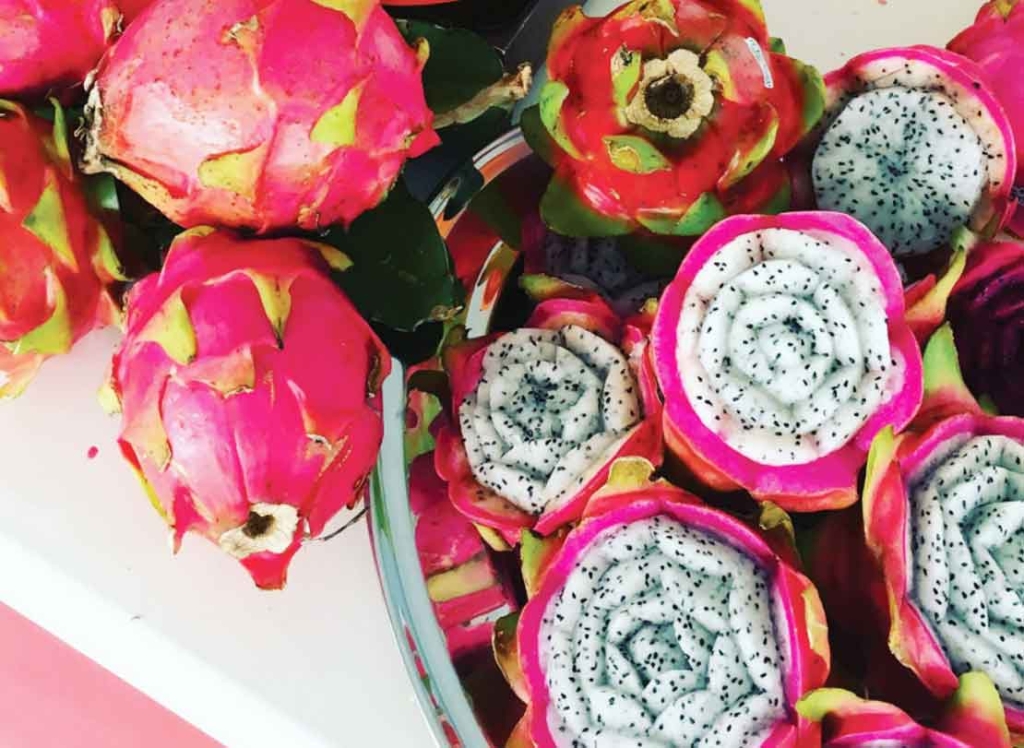Pitaya
The pitaya is a tropical fruit that is native to South America. It is a fruit with a red or pink skin that contains a white or pink pulp. Pitaya is a good source of vitamin C, potassium and fiber.
It is also rich in antioxidants that can help protect cells from damage.

Pitaya
Pitayas are known worldwide as Dragon Fruits or Dragon Fruits and belong to the Cactaceae family, which has approximately 100 genera and 1,500 species native to the Americas.
In Brazil, pitaya is considered an exotic fruit because it is little known, exuberant and sold at high value, especially in demanding markets.
We can say that, currently, pitaya seedlings sold in Brazil do not come from selected matrices and properly evaluated from an agronomic point of view in different regions of the country.
In pitaya orchards, there is great variation in the production, size and shape of fruits, as well as in their physical-chemical characteristics, reflecting the non-uniformity of the plants.
Another problem is that producers have cultivated imported varieties with low productive capacity and poor adaptation to Brazilian soil and climate conditions. One example is the unsuccessful cultivation of Yellow Pitaya imported from Colombia.
The pitaya, also known as dragon fruit, is a tropical fruit that is native to South America. It is a fruit with a red or pink skin that contains a white or pink pulp. Pitaya is a good source of vitamin C, potassium and fiber. It is also rich in antioxidants that can help protect cells from damage.
The pitaya is a medium-sized fruit, measuring around 5 to 10 centimeters in diameter. The skin is red or pink and smooth, and the pulp is white or pink, with small black seeds. Pitaya has a sweet, mild flavor with a hint of watermelon.
Pitaya is a versatile fruit that can be consumed in many ways. It can be consumed raw, as a dessert or snack. It can also be used to make juices, ice cream, salads and other recipes.
Here are some of the health benefits of pitaya:
- Source of vitamin C:Vitamin C is an antioxidant that helps protect cells against damage.
- Source of potassium:Potassium is a mineral that helps regulate blood pressure.
- Source of fiber:Fiber helps regulate the digestive system.
- Rich in antioxidants:Antioxidants help protect cells against damage.
Pitaya is a delicious and nutritious fruit that offers a variety of health benefits. It is a great option for those looking for an exotic and healthy fruit.
How to choose a ripe pitaya:
- The skin should be red or pink and shiny.
- The pulp should be white or pink and firm.
How to store a pitaya:
- Pitaya can be stored in the refrigerator for up to a week.
How to eat a pitaya:
- The skin can be peeled with a knife or peeler.
- The pulp can be eaten with a spoon or cut into slices.
Safety Tips:
- The pitaya must be washed before being consumed.
- Pitaya seeds are edible, but not very tasty.
Other information:
- Pitaya is a popular fruit in Asia and South America.
- Pitaya is a good source of carotenoids, which are bioactive compounds with antioxidant and anti-inflammatory properties.
- Pitaya is also a good source of anthocyanins, which are bioactive compounds with antioxidant and anticancer properties.
Here are some recipes with pitaya:
- Pitaya juice:Blend the ripe pitaya in a blender with water and sugar to taste.
- Pitaya ice cream:Beat the ripe pitaya with condensed milk, cream and milk.
- Pitaya jelly:Cook the ripe pitaya with sugar until it thickens.
- Pitaya jam:Cook the ripe pitaya with sugar until they become sweet.
- Fruit salad with pitaya:Mix the ripe pitaya with other fruits of your choice.
How to plant pitaya:
- The pitaya is a perennial plant that can be grown from seeds or seedlings.
- Seeds should be planted in fertile, well-drained soil.
- The seedlings should be planted in a sunny location.
Pitaya is a delicious and nutritious fruit that can be grown in Brazil. It is a great option for those looking for an exotic and healthy fruit.


